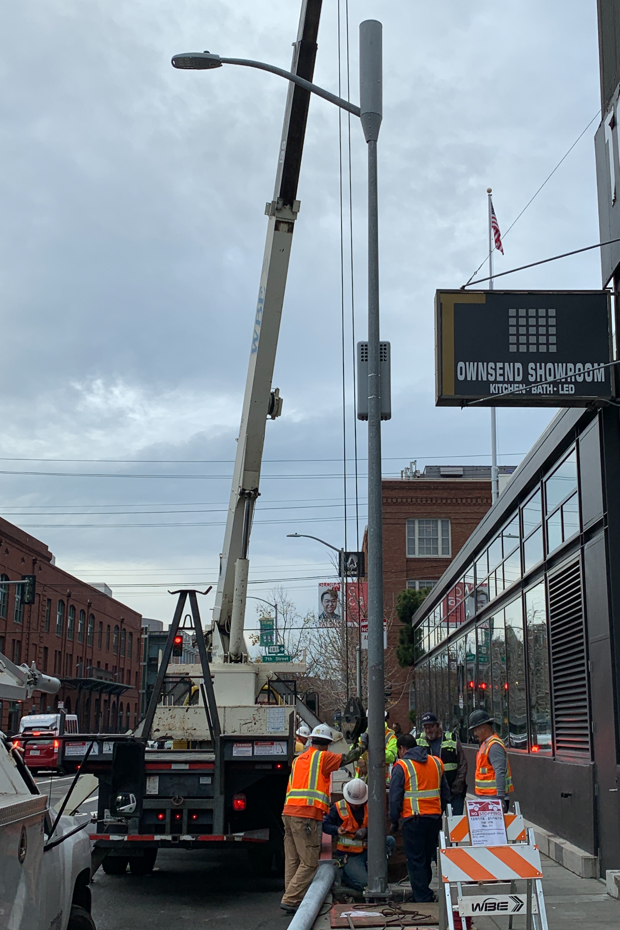How Far From a 5G Cell Tower Is Safe?

Mobile communication services can be found via using cell phone towers. These towers are often entirely on utility poles, roofs, and cellular phone antennae.
Within 50 meters of the antenna, mobile phone tower radiation is normally at its peak and gradually becomes weaker from there. It's crucial to maintain your distance from a 5G cell tower due to this.
1. The Tower's Height
The new 5G technology runs at frequencies that are higher than those of earlier generations, and high frequency waves have a more difficult time passing past obstructions. Therefore that several smaller towers, referred to as tiny cells, should be setup in towns and cities around the world. There will be an unending blast of RF radiation for everybody around since these small antennas will undoubtedly be placed far closer together than conventional cell towers.
The potential hazard of the new tiny cell antennas is really a major way to obtain concern. They worry that by living not far from, they may are more likely to get cancer or other illnesses. These worries are unjustified, however. These antennas emit RF (radio-frequency) radiation that is hundreds of times below acceptable levels. Furthermore, research shows that residing close to a cell tower does not make you more likely to become sick.
An average cell tower's range is between one and three miles. The gear on the tower and the terrain it traverses define its range. The number is frequently shorter in urban settings?between 0.25 miles and 1 mile.
2. The Signal's Frequency
Radio Frequency Radiation (RF) from cell towers may be dangerous. This RF radiation may enter your body of a person and bring about illnesses including nausea, migraines, and also cancer.
Wide-ranging frequencies are used by cellular towers to deliver speech and data. The coverage area of low frequency transmissions, such as those at 600 MHz and 700 MHz, is larger than that of high frequency broadcasts. For example, a cell tower operating at 2.5 GHz frequencies has a 3 mile or even more coverage area. But a cell tower operating at 3.5 GHz C-band frequencies can only just send out its signal for roughly a mile.
More cells must be installed in metropolitan areas for cellular networks to operate more efficiently. They must construct additional cell towers and locate them closer together to do this. As a result, the radius of cell towers has decreased over time. Currently, the majority of cell towers in urban centers are 0.25 miles to 1 1 mile aside from one another.
Because 5G needs additional cell sites, it has increased worries concerning the technology. Some others also worry that civilians will be spied on via these cell locations. For instance, some individuals worry that the advent of 5G may lead to an increase in the amount of stingrays, or false cell towers. These stingrays transmit signals to cellular devices that enable position tracking and user identification.
3. safe distance from 5g tower

How much energy that a signal is transmitting is gauged by its power. How much energy communicated increases with power. The frequency of the signal and the amount of time it really is being sent impact on the signal's power aswell.
The concerns associated with 5G mobile towers with regard to security, privacy, and health have lots of people worried. Additionally, they worry that the skyscrapers can make their properties worth less. Some localities are even wanting to outright prohibit the installation of these cell towers.
click here that 5G consumes substantially more power than earlier wireless technologies is among the reasons for a number of the concerns around it. Due to this fact, you will find a greater chance that the towers may release radiation. Additionally, there are worries that the towers' radiation may donate to illnesses including cancer and heart disease.
These worries are unjustified, however. In accordance with studies, the RF radiation via 5G towers is hundreds as well as thousands of times below acceptable limits. Furthermore, rays from cell towers cannot enter the human body since it is not absorbed by living tissue. Additionally, 5G tower signals have shorter wavelengths than those from prior mobile phone technologies. Subsequently, the cell towers must be placed more closely together than in the past since they can only just traverse short distances.
4. THE https://www.pearltrees.com/waxquit05/item519063455 Between You and the Tower
There is fear that additional cell towers will be required once the mobile network switches to 5G. Simply because the 5G network will run at higher frequencies, and higher frequency waves have a more difficult time bouncing off of hills, trees, and other obstructions. As a result, cell towers must be considerably closer together than in past technological eras, increasing the amount of transmitters around you constantly.
The issue is that the majority of people mistake tiny cells for 5G cell towers. Small cells, which are generally installed on utility poles or light poles, are actually antennas that function in conjunction with giant macro-towers to create wireless networks. Due to their closeness to residences and businesses, despite the fact that they aren't regarded as being a element of a cellular phone tower, some individuals mistakenly think that they represent 5G technology.

The initial part of the tower's radius is where cell phone radiation reaches its peak, and as you go farther away, it becomes weaker. what is a safe distance from a 5g cell tower have really shown that some residents who live near a cellular phone tower experience health discomforts including headaches and indigestion. One German research monitored people who lived 400 meters or less from two mobile phone towers for 10 years. They found that the incidence of cancer diagnoses was 3 x greater for many who lived near to the tower than for people who lived further away.
